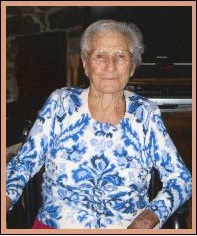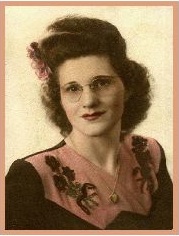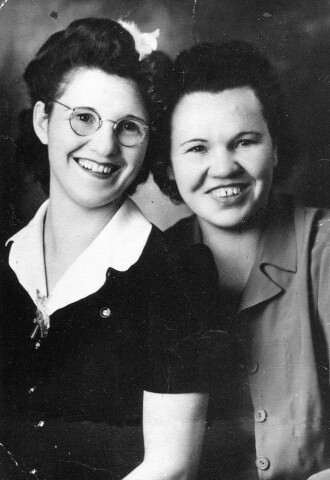Mon 26 Jan 2015
Donna Rae
Posted by PJ under caregiving, death, mom, rosie the riveter, what the living do
No Comments
Donna Rae McDonough
April 7, 1921 – January 22, 2015
Donna grew up on a farm in a tiny place called Willow Creek, Utah, no longer found on any map because it’s now part of the Ute Indian Reservation. She became a cattle ranch cook at sixteen, even participating in a cattle drive one summer when the ranch owner was short on cowhands.
In 1942, Donna came to Los Angeles to work for Douglas Aircraft, employed as a riveter on C-54’s for the war effort. She was extremely proud of being “Rosie the Riveter,” as she should have been.
After her marriage, she worked for a time with her first husband, Lloyd Thompson, installing carpeting and linoleum. She retired from this activity when she was six months pregnant with her daughter, Pamela. For some years afterward she concentrated her considerable energy on raising her daughter, taking care of neighborhood children, homemaking, and being a horsewoman. She stabled her horses at a barn and equestrian center once located where the Marina Freeway now ends at Lincoln Boulevard.
Eventually, Donna went to work for General Telephone Company, retiring after twenty-five years at age sixty-two to spend more time with her second husband, Sgt. Major Thomas P. McDonough, USMC (ret.). For a time, she was the Governor’s Wife of the Santa Monica Moose Lodge.
She remained active at bowling, crafts, painting, gardening, dancing, Do-It-Yourself building projects, cooking, and reading. Until a stroke damaged her eyesight in 2011, she read almost a book a day, mostly romances and thrillers. She always maintained, “I don’t care what kind of book it is, you can always learn something from it.”
When Donna’s kidneys failed in 2010, she met the challenge of dialysis with courage and a generally positive attitude. She did her own peritoneal dialysis at first until her damaged eyesight made that impossible. She kept her courage and good humor, blessed with a sharp and active mind until the end of her remarkable life at age 93.



